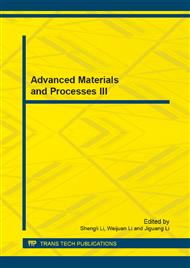p.223
p.230
p.234
p.238
p.243
p.251
p.259
p.262
p.266
Effect of Hydrogen as a Temporary Alloying Element on the Microstructure and Mechanical Properties of Ti-6Al-4V Titanium Alloy
Abstract:
The α + β dual-phase titanium alloy, Ti-6Al-4V, was thermohydrogen processed with 0.1, 0.3 and 0.5 wt% hydrogen. Hydrogen was removed from the hydrogenated titanium alloy by vacuum annealing. Microstructure and mechanical properties of the hydrogenated and dehydrogenated titanium alloy were investigated. Effect of hydrogen as a temporary alloying element on the microstructure and mechanical properties of Ti-6Al-4V titanium alloy was systematically discussed. It was found that hydrogen stabled the β phase and leaded to the formation of α martensite as well as δ hydride in the hydrogenated titanium alloy. Mechanical properties of hydrogenated titanium alloy deteriorated with increasing hydrogenation content. The α martensite and δ hydride decomposed during the dehydrogenation and the dehydrogenated titanium alloy only consisted of α and β phases. The mechanical properties of hydrogenated titanium alloy with different hydrogen content were recovered and were tend to be consistent after dehydrogenation.
Info:
Periodical:
Pages:
243-250
Citation:
Online since:
September 2013
Authors:
Price:
Сopyright:
© 2013 Trans Tech Publications Ltd. All Rights Reserved
Share:
Citation:


